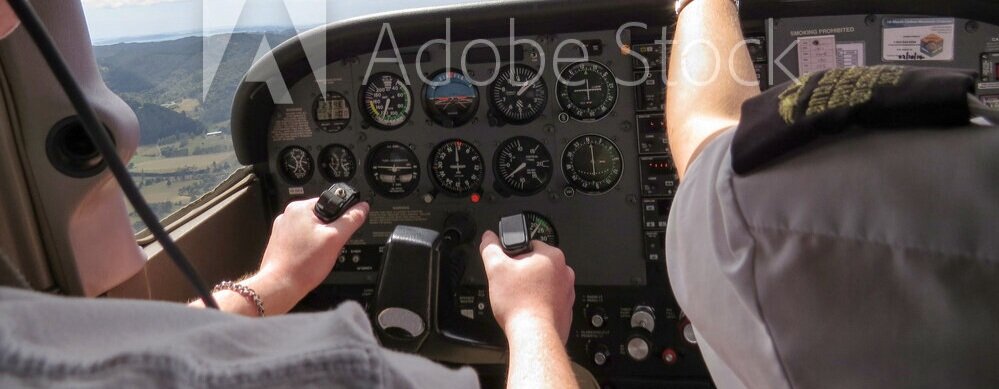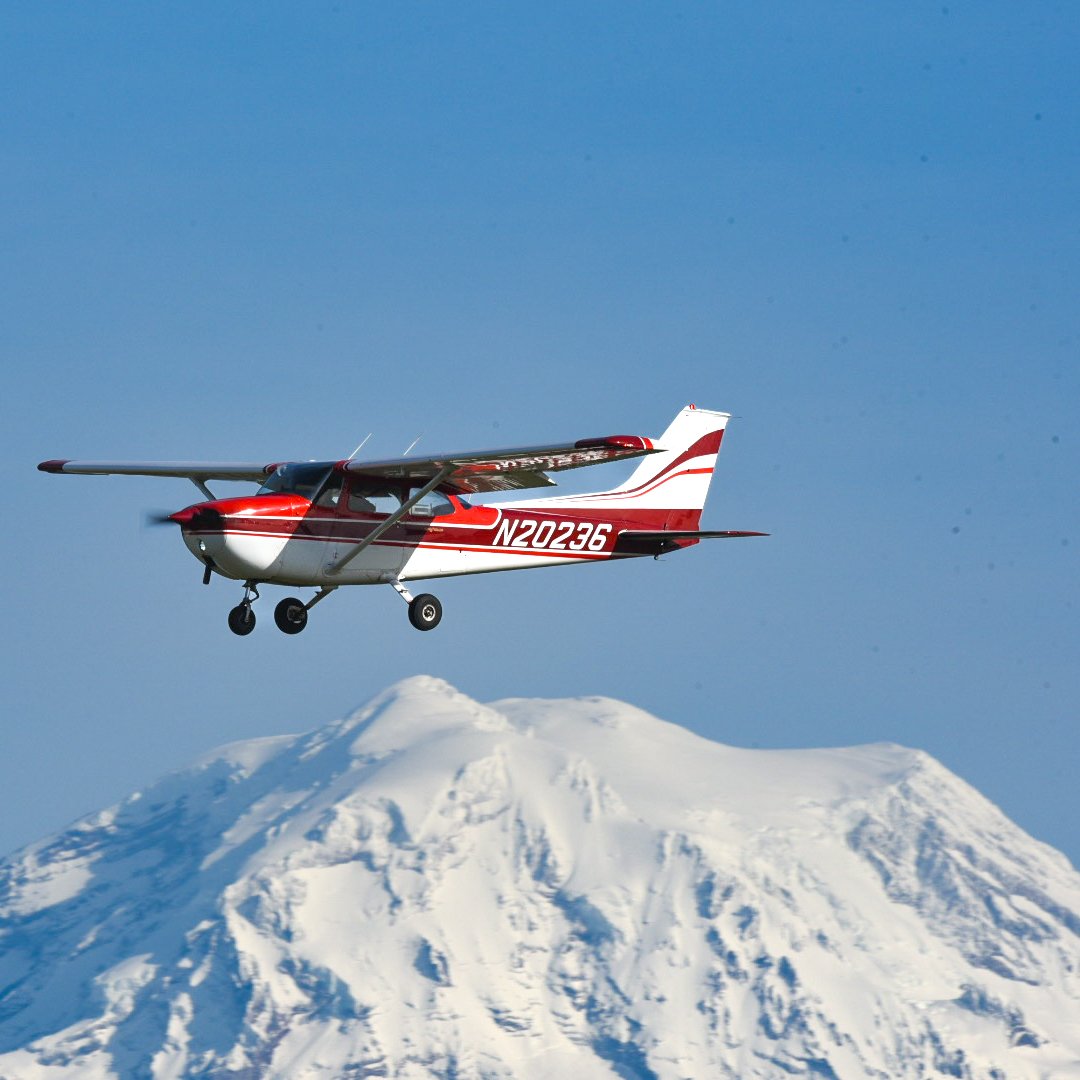
Stop Dreaming, Start Flying Today!
The Flight Training Process & Considerations

First Step
Building Experience
Paying It Forward
Advance Your Skills
Pre-flight Training Planning – What you need to know about Flight Training
Whether you are just researching information to become a pilot or looking to advance your pilot skills, let us briefly review some of the considerations for getting a pilot certificate or rating. You are already on the right track since you are on this webpage, which means you are researching schools and programs to find the best fit for your learning style, training goals, budget, and location. Want to learn more?
Click HERE for some basic steps on How to Become a Pilot.
Click HERE to learn more about Flight Schools Part 61 or Part 141.
Click HERE to learn more about the differences between Flight School, Flight Academy, or College.
Click HERE to learn more about International Student Flight Training.

FAQ’s
-
Easy! Simply contact us to set up a consultation to determine your goals, answer questions, and discuss the next steps –we are with you every step of the way! OR, Schedule an “Introductory Flight." We’ll take you up in the airplane and let you do the flying to see if you enjoy it (and you will!) and give you an opportunity to interview us and our school.
-
Simple! Just stop by or call us at (253) 840-5758 (Option 1 for Puyallup or Option 2 for Olympia) and tell our Customer Service Representative that you are interested in learning more about flight training and would like to schedule an introductory flight. The airplanes have 4 seats, so if you want to bring a friend or two with you, that is not a problem. (There is just a nominal fee for each additional person and weight restrictions apply.) Before the flight, your Flight Instructor will talk with you to learn more about your goals and any prior experience. Afterward, you will have a post-flight briefing to answer any questions and be provided with the next steps toward training if you are interested in moving forward!
-
Once you have decided to pursue becoming a pilot, we will provide you with additional information and help you get started. (Click HERE to Learn More) As mentioned, your flight instructor and our friendly support staff will guide and help you through each step. During the initial enrollment meeting you will need to bring the following documents:
• Government-issued Photo Identification (Driver’s License or Passport)
• Proof of U.S. Citizenship (U.S. Passport or Birth Certificate)
• Any Pilot Certificates and Aviation Medical Certificates (if you have any)
For students that do not have U.S. Citizenship, we have you covered! Safety in Motion Flight Center is approved for training non-US students. Just inform our Customer Service Representatives and we will provide you with the information and steps needed to gain approval from the TSA for flight training. It is a simple process that takes about 1-2 weeks to complete. You can start ground school classes at any time but just cannot start in-flight training until we receive final TSA approval. Click HERE to Learn More.
-
Right Away! We tailor your training to your individual needs and schedule. Typically, your flight instructor will assure that you possess some basic aeronautical knowledge either through attending the first 1-2 weeks of our ground school (classroom topics), online ground school, or with us working with you one-on-one. After that, your flight lessons and ground school can be worked on simultaneously. Your training syllabus will provide you with the training sequence that we will be following, so you will always know where you are and what is coming next. Your flight instructor will work with you to determine a training schedule, then get you scheduled for all your next lessons. If your schedule permits, we will schedule your lessons up to a month in advance so that you have a predictable schedule, and to ensure all the resources you need are reserved for you (instructor, airplanes, simulator, etc.).
-
The investment into your flight training is directly affected by your study commitment and the number of lessons you take per week. If you are currently “shopping flight schools” be sure that you are comparing what is being offered between schools to ensure it is the same. Most schools only quote the cost of the minimum flight time required by the FAA, which is unrealistic. Some flight schools will include the cost of everything, such as supplies, exams, etc., while many others will leave that information out. Costs are additionally dependent on your current level of experience, the number of lessons you plan to take per week, and other factors. Based on these variables, total cost estimations of flight programs can vary significantly from person to person. Simply contact us so we can ask some of these questions and provide you with a "realistic" cost estimate for your training.
Because aircraft rental and flight instructor rates change occasionally based on price of fuel, aviation insurance, etc., our up-to-date aircraft rental and instructor rates are available at our front counters or you can inquire by simply calling one of our Customer Services Representatives at: (253) 840-5758
Click to View the Cost Estimate Chart and Learn More about Flight Training Costs
-
The time it takes is directly determined by student attendance; the more often you fly, the faster you will finish. On average, a typical flight lesson takes 2 hours from when you walk into the school, to when you leave. If you fly 4-5 days a week, you will complete it in approximately 3 months (per pilot certificate or rating). Students who fly only 2-3 lessons per week working toward a Private Pilot certificate, for example, will typically take 6-9 months to complete and require more flight time and expense. This is simply due to knowledge and skills fading over time, even if it’s just a few days between lessons.
-
Typically, the answer is “yes.” Most pilot and flight instructor certificates and ratings will require you to take both an FAA written Knowledge Exam and an FAA Practical Exam (a.k.a., “checkride”). Your flight instructor will ensure you are prepared for both. Safety in Motion Flight Center is also an approved FAA Written Testing Facility, so we can conduct your written exams in our facility with our staff that are certified as testing proctors.
-
First, you will take a final evaluation flight with either our Chief or Assistant Chief Flight Instructor to ensure you are fully prepared and confident prior to taking the practical exam. The Practical Exam (checkride) is the final evaluation you will take that will result in you being awarded your pilot certificate or rating. This is performed by an FAA-appointed Designated Pilot Examiner (DPE). Your flight instructor will help you prepare your application to take the exam and help you coordinate the day and time of your appointment with the DPE.
Flight Schools - Part 61 or Part 141?
The Federal Aviation Administration (FAA) provides regulations that dictate what aeronautical knowledge, flight training, and flight experience a pilot applicant must have to acquire a given pilot certificate or additional aircraft rating. These requirements are spelled out in either Part 61 or Part 141 of the Federal Aviation Regulations. Think of “Parts” as being “Chapters” of the FAA’s Regulation book.
Part 61 — This Part addresses the certification of pilots, flight instructors, and ground instructors and as just mentioned, provides the requirements to achieve various pilot and instructor certificates and ratings (additional permissions for flying). There is very little FAA oversight of flight schools or independent flight instructors that provide training under Part 61 and as such, the quality of the training can not be assured. You will want to be sure that a training syllabus is being used to ensure that your training meets all the FAA requirements for topics, experience, and performance standards. You will need to be keenly involved in your flight training to make sure that your money and time is being spent wisely.
Part 141 — This Part addresses the certification of flight schools. A “Part 141 Flight School” simply means that a flight school has applied to the FAA to become a certificated flight school. Once approved, the school must ensure the quality of instruction. An approved training syllabus must be used and followed along with proper recordkeeping documentation. The training aircraft will receive “conformity checks” from the FAA maintenance inspectors to ensure they are airworthy and well maintained. Additionally, the FAA will approve a Chief Flight Instructor to oversee the training programs, flight instructors, support staff, and aircraft maintenance. The school needs to have FAA approval prior to changing the training curriculum or adding airplanes. Due to this level of oversight, training times for acquiring pilot certificates and ratings is reduced from the Part 61 requirements.
Safety in Motion Flight Center can provide training in accordance with both regulations. We evaluate each student individually to determine which regulation’s training program would be to their financial benefit. This is especially important for students who transfer to us from other schools, where enrollment into a Part 141 program to complete training for a specific certificate or rating may prove to be more expensive. Again, our focus is on your success in attaining your training goals and doing so in the most cost-effective way possible!
False statements/information regarding training under Part 141:
Training under Part 141 takes longer and is more expensive.
False! Training under Part 141 can be achieved in less flight hours (and since you are paying per hour, that means less cost). As an example: Private Pilot minimum hours under Part 141 is 35-hours while under Part 61 it is 40-hours. An instrument rating under Part 141 is 35-hours and under Part 61 approximately 90-hours!
Training under Part 141 is for people looking to go to the airlines.
False! Part 141 provides a safeguard to students ensuring quality standards are in place and that the training meets all of the FAA requirements (the same list as provided under Part 61) and that students are prepared for the practical exam. It is true that airlines and other aviation industry flight departments like to see graduates from a structured and standardized course of training, but it is typically not a requirement. Just think of Part 141 as an insurance policy to ensure you are receiving everything the FAA requires you to have and to the quality standards necessary to pass the practical exam (a.k.a. “checkride”).
Part 141 requires that a training syllabus be followed.
True! YOU WANT TO USE A SYLLABUS! Regardless of if you are looking at a Part 61 school or Part 141 school, if they are not using a training syllabus — go find another school. The syllabus will ensure that you know where you are in your training, that all the knowledge and flight proficiency task have been taught, and that standards of performance to prepare you for the final practical exam have been met. Additionally, a syllabus organizes your lessons into a ‘building block’ configuration so that you learn new skills after acquiring foundational knowledge/skills (e.g., You need to know how to steer and operate the car before being taught to parallel park). You will most assuredly become frustrated spending excess time and money training with a program that is neither structured nor standardized.
Usually, the main reason some flight schools and/or flight instructors try to talk a student out of training under Part 141 (again unless there is a good financial reason based on prior training), is because they do not want to have the FAA checking their aircraft, or do not want to be held accountable to the syllabus or recordkeeping requirements. At Safety in Motion, we use a syllabus and keep records of your training regardless whether you train under Part 61 or Part 141 — It is simply the right and responsible thing to do!
Should I train at a Flight School, Flight Academy, or College?
This depends on what your goals are, timeline to complete, and financial situation. Here are some quick points for each option:
Flight School — Flight schools specialize in one thing, Flight Training. The level and complexity of that training vary between schools, with smaller schools offering specialized training such as tailwheel airplanes or a Sport Pilot certificate, up to larger schools like Safety in Motion that offer programs ranging from Sport Pilot up to Airline Transport Pilot, and much more. Some schools like ours allow you to pay as you go, while others require money up-front (be very careful of schools requiring up-front payments and read the fine print). With advance notice and if you commit the time to learn, flight schools can typically keep up with your pace of training, even if you want to fly 2-times a day, or every day, which will have you completing at the same rate (or faster) as going to an accelerated flight academy type program. Because most flight schools are not configured as colleges, financial aid options can be limited. Some schools like Safety in Motion, affiliate with local colleges and universities, the Veteran’s Administration, and other entities that can assist if additional financial assistance is needed/desired. We realize that each student has different needs and goals, so your training program is individualized and tailored accordingly.
Flight Academies — Academies are typically focused on getting pilots directly to the airlines in the most time-efficient way possible. These programs typically require paying for the full program in advance and simply train to a testing standard that will allow for rapid flight-time building toward an airline-focused career. These training pathways will typically not allow you to have a job, as your time will be spent either in training or flight time building. The programs are fast-paced and usually have an expectation that you have studied all the required knowledge topics prior to starting the program. Again, read the enrollment paperwork! Some of these programs will indicate they have fully earned the money after 50% of your training is completed and if you are not making satisfactory progress, they can terminate your training and keep the remaining money. These programs can run from $60,000 to over $100,000, so be sure you are fully informed and understand the expectations and requirements before signing any agreements.
Colleges & Universities — Some colleges and universities offer flight degree programs that include flight training. Although these programs can take much longer to complete than the flight schools and academies, they typically provide more financial assistance options through Federal Grant and Loan programs, Bank Student Loans, etc. Another big advantage for those of you with a goal to fly for the airlines, is that these schools typically have FAA approval allowing you to meet the airline hiring minimums with less flight time experience, in some cases reduced by 500 flight hours! As mentioned, some flight schools such as Safety in Motion Flight Center, are affiliated with local colleges and provide the flight training for their programs. Safety in Motion is partnered with Green River College in Auburn, Washington. As mentioned, college programs typically take much longer to complete since you need to adhere to a class and credit schedule instead of just flying as much as you want. For example, a Private Pilot certificate will normally take a year to complete at a college/university, but only 2-3 months at a flight school or academy.
To find out more about how we can assist you with your specific flight training needs, simply contact us. We strongly recommend scheduling either an in-person, Zoom, or telephone meeting with us as each person’s situation is unique and discussing your training and answering questions in real time can make things much easier.
International Student Flight Training
Safety in Motion Flight Center is approved by the U.S. Transportation Security Administration (TSA) to provide flight training to non-US citizens through the TSA’s Alien Flight Student Program. Registration and application only applies to those seeking “Initial Training” (Sport, Recreational, or Private Pilot Certification), Instrument Rating, or Multi-engine Rating. The steps are quite simple:
1) Go to the TSA’s website and register for an account in the Candidate Registration Portal.
2) Once you have entered your information and created an account, you will then select a service provider (Safety in Motion Flight Center) and provide the specifics about the flight course you want to take. Prior to conducting this step contact the flight school to discuss your training program so that we can provide you with the information you will need to complete your application.
3) You will be training under “Category 3” since the airplanes you will be training in are under 12,500 pounds. Once you completed and submitted the registration, the TSA will review it and notify the flight school to ensure we are aware of your request.
4) Once the TSA receives the flight school’s response, they will email you a link to have a preliminary background check performed. This will cost approximately $130.00 and can be paid online.
5) Usually within 1-day, the background check will come back and both you and the flight school will be notified that you have “preliminary authorization” for training, but you still cannot fly yet. This email will additionally provide instructions on the final step of getting your fingerprints taken and having them processed through the Federal Bureau of Investigation (FBI) database.
6) Approximately 3-4 days from getting your fingerprints taken, both you and the flight school will receive another email that you now have final approval and you may now begin your flight training! As a final step in the process, when you come in for your first lesson, we will need to take a picture of you to upload to your TSA account.
Once you have completed your course of instruction, we will simply notify the TSA and that account will be closed. If you plan to take an additional course that also requires approval (e.g. Instrument Rating), you will need to go through the course selection process again, but do not have to get fingerprinted.
Remember, we’re with you every step of the way and available if you have questions or need help!

